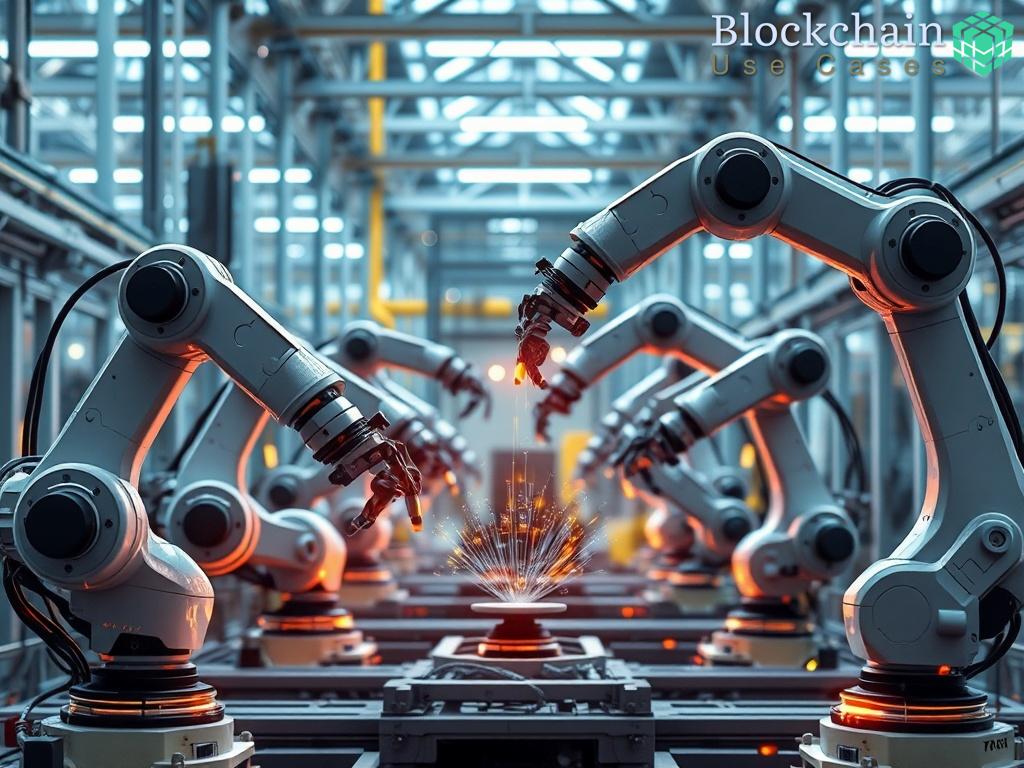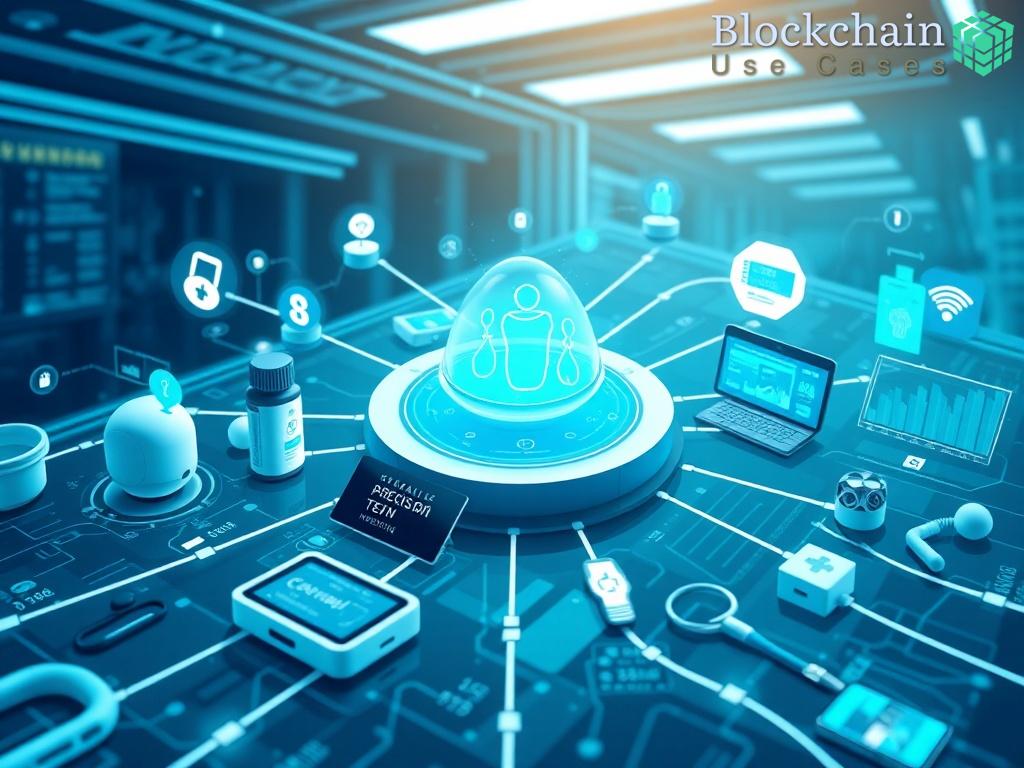Architectural Frameworks for Decentralized IoT Systems
In an era where Internet of Things (IoT) devices proliferate, the traditional centralized models of data processing and control are increasingly becoming bottlenecks. Decentralized architectures emerge as a solution, enabling IoT systems to operate more efficiently and resiliently. This shift not only enhances system performance but also fosters collaboration among robots and automation technologies.
The architectural frameworks for decentralized IoT systems are designed to facilitate seamless interactions among devices while minimizing reliance on central servers. Below are the essential components that constitute these frameworks:
- Autonomous Agents: Each IoT device acts as an autonomous agent capable of making real-time decisions based on local data.
- Peer-to-Peer Communication: Devices communicate directly with one another, reducing latency and bandwidth consumption.
- Distributed Ledger Technology: Utilizing blockchain or similar technologies enhances security and transparency in data transactions.
- Self-Organization: Systems can reorganize themselves dynamically based on changing conditions or requirements, improving adaptability.
When evaluating architectural approaches, it is vital to understand the differences between centralized and decentralized models. The following table summarizes key aspects of each architecture:
| Aspect | Centralized Architecture | Decentralized Architecture |
|---|---|---|
| Control | Single point of control | Distributed control among devices |
| Scalability | Limited scalability due to central bottleneck | Highly scalable as new nodes can be added seamlessly |
| Fault Tolerance | Vulnerable to single points of failure | Enhanced resilience as failure in one node does not affect others |
| Data Privacy | Higher risk of data breaches | Improved privacy through local data processing |
The choice of architecture significantly influences the performance and reliability of IoT systems. Decentralized frameworks not only cater to the growing complexity of interconnected devices but also promote a collaborative ecosystem that encourages innovation and efficiency.
Security Challenges in Collaborative Robotics
As the landscape of collaborative robotics evolves through decentralized IoT platforms, the focus shifts toward the security challenges that accompany this innovative transformation. With devices interacting autonomously and sharing data in real-time, safeguarding these systems becomes paramount. This section delves into the intricate security concerns that arise when integrating collaborative robotics in decentralized frameworks, highlighting the need for robust security measures.
In a decentralized environment, various vulnerabilities can compromise the integrity of collaborative robotics. Understanding these threat vectors is crucial for developing effective security protocols. Below is a list of common threats that can impact decentralized IoT systems:
- Data Interception: Unauthorized entities may intercept communication between devices, leading to data breaches.
- Device Spoofing: Attackers can masquerade as legitimate devices to manipulate actions or steal sensitive information.
- Malware Attacks: Malicious software can infiltrate devices, disrupting operations and compromising security.
- Denial of Service (DoS): Overloading devices with traffic can render them inoperable, disrupting collaborative processes.
- Insecure Interfaces: Poorly designed APIs and interfaces can provide entry points for attackers.
To mitigate the identified threats, implementing a multi-layered security approach is essential. Here are key strategies that can enhance the security of decentralized platforms in collaborative robotics:
- End-to-End Encryption: Employing encryption for data transmission ensures that even if data is intercepted, it remains unreadable.
- Authentication Protocols: Utilizing strong authentication methods, such as biometrics or multi-factor authentication, can prevent unauthorized access.
- Regular Software Updates: Keeping software and firmware up-to-date reduces vulnerabilities that could be exploited by attackers.
- Decentralized Identity Management: Implementing decentralized identity solutions can enhance trust among devices and users.
- Continuous Monitoring: Real-time monitoring systems can detect anomalies and potential breaches, allowing for swift responses.
By prioritizing security in the design and implementation of decentralized IoT platforms, stakeholders can foster a safer ecosystem for collaborative robotics. Addressing these challenges not only protects data integrity but also builds trust in innovative solutions that leverage the power of collaboration in automation.
Interoperability Standards for IoT Devices
In the rapidly evolving landscape of decentralized IoT-based collaborative robotics and automation, interoperability stands as a pivotal factor in ensuring seamless communication and cooperation among diverse devices. As organizations invest in a range of IoT solutions, the need for standardized protocols becomes increasingly critical. This section explores the significance of interoperability standards and their impact on fostering a cohesive ecosystem for collaborative robotics.
Interoperability refers to the ability of different systems, devices, or applications to communicate and function together effectively. In the context of IoT, where multiple devices from various manufacturers operate in conjunction, achieving interoperability is essential for maximizing system efficiency and facilitating data exchange. Without standardized protocols, the potential for isolated operations increases, rendering the advantages of decentralized architectures less effective. This section highlights key aspects of interoperability:
- Enhanced Collaboration: With standardized communication protocols, devices can easily share data and insights, improving collaborative tasks between robots and automation systems.
- Reduction of Integration Costs: Interoperability minimizes the need for custom integration solutions, thereby lowering costs and accelerating deployment timelines.
- Future-Proofing Technologies: Adhering to widely accepted standards ensures that new devices can be integrated into existing systems without compatibility issues, promoting longevity and adaptability.
The adoption of specific interoperability standards can significantly enhance the functionality of decentralized IoT platforms. Leading organizations and consortiums have established various protocols aimed at creating a unified framework for IoT devices. Some noteworthy standards include:
- MQTT (Message Queuing Telemetry Transport): A lightweight messaging protocol that facilitates efficient communication between devices, especially in low-bandwidth environments.
- CoAP (Constrained Application Protocol): Designed for resource-constrained devices, CoAP is ideal for enabling communication in IoT applications, particularly in automation.
- OneM2M: A global standard that establishes a common framework for machine-to-machine (M2M) communications, ensuring interoperability across various IoT applications.
These standards not only enhance communication among IoT devices but also promote a collaborative environment where robots can leverage shared data to improve decision-making and operational efficiency. As industries continue to embrace decentralized architectures, the focus on interoperability standards will play a crucial role in shaping the future of IoT-based collaborative robotics and automation.
Use Cases of Decentralized Robotics in Industry
The advent of decentralized platforms for IoT-based collaborative robotics is revolutionizing industries by enhancing operational efficiency, flexibility, and collaboration. In this rapidly evolving landscape, organizations are leveraging these technologies to address various challenges, streamline processes, and foster innovation. By eliminating the reliance on centralized control systems, industries can harness the collective intelligence of multiple autonomous agents, allowing robots to operate in dynamic environments with minimal human intervention.
Manufacturing is one of the most prominent beneficiaries of decentralized robotics. In smart factories, robots equipped with IoT capabilities can communicate directly with one another, sharing real-time data to optimize production schedules and reduce downtime. This interconnectedness facilitates agile responses to changes in demand, enabling manufacturers to adapt swiftly without the delays associated with traditional centralized systems. Furthermore, by employing decentralized platforms, manufacturers can minimize the risk of production bottlenecks, as each robot operates independently while contributing to a collective goal.
As supply chains become increasingly complex, the demand for efficient logistics solutions is at an all-time high. Decentralized robotics offers a transformative approach to managing supply chains by enhancing the capabilities of autonomous delivery and warehouse robots. These robots can operate collaboratively, sharing information about inventory levels, order statuses, and shipping schedules, thereby improving accuracy and reducing lead times. In contrast to traditional models, where a central system may become overwhelmed during peak periods, decentralized platforms enable a more responsive approach, allowing robots to dynamically allocate resources based on real-time data.
Moreover, the implementation of decentralized robotics in logistics introduces improved safety protocols. Autonomous vehicles can communicate with one another to avoid collisions and optimize routes without human oversight. As a result, not only does this increase operational efficiency, but it also significantly enhances the safety of personnel and assets within warehouses and distribution centers.
The healthcare sector is witnessing profound advancements through the integration of decentralized robotics. These systems are designed to improve patient care and operational workflows by leveraging IoT technologies. For example, autonomous robots can assist in routine tasks such as medication delivery, patient monitoring, and even surgical assistance. By functioning independently and communicating with each other, these robots can ensure that critical tasks are performed efficiently while minimizing the risk of human error.
In addition to operational efficiency, decentralized robotics enhances patient safety and comfort. Through real-time data sharing and collaborative decision-making, healthcare providers can respond promptly to patient needs, leading to better health outcomes. Furthermore, the ability of robots to self-organize and adapt to changing environments enables healthcare facilities to maintain high standards of service even in times of crisis, such as during a pandemic.
Future Trends in IoT-Driven Automation
The future of IoT-driven automation is set to be significantly shaped by the integration of advanced artificial intelligence (AI) and machine learning (ML) technologies. As IoT devices become more sophisticated, they will increasingly rely on AI algorithms to process data and make informed decisions independently. This synergy will enable robots to not only perform tasks but also learn from their environments, adapting to new challenges and optimizing their operations in real time. The potential for self-optimization in decentralized systems could lead to enhanced efficiency, reduced operational costs, and a new level of performance that was previously unattainable.
With the advent of 5G technology, the landscape of IoT-driven automation is on the brink of transformation. The ultra-low latency and high bandwidth offered by 5G will facilitate seamless communication between devices, enabling them to operate collaboratively without the limitations posed by traditional networks. This will lead to a proliferation of decentralized platforms where robots can share data instantaneously, enhancing their ability to work together effectively. Furthermore, as we look toward future advancements, concepts like 6G promise even greater connectivity, supporting an expansive ecosystem of interconnected devices that can interact in real time.
As the demand for faster data processing increases, the role of edge computing will become crucial in the realm of decentralized IoT platforms. By processing data closer to the source, edge computing reduces latency and bandwidth usage, allowing robots to make quicker decisions and respond to environmental changes with agility. This paradigm shift not only enhances the operational efficiency of collaborative robotics but also addresses critical issues related to data privacy and security, as sensitive information can be processed locally rather than transmitted to centralized cloud servers. The combined effect of these innovations will lead to a more robust and resilient ecosystem for IoT-driven automation.





